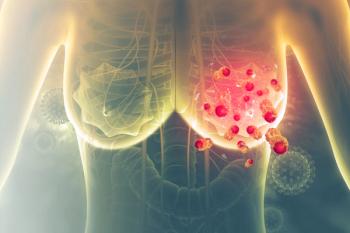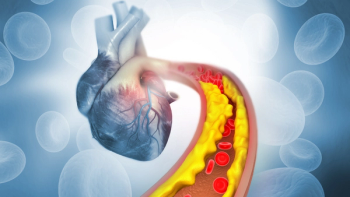Key findings from STEER and STRENGTH
- First gene therapy approved for SMA patients aged 2 years through adulthood with confirmed SMN1 mutations.
- Motor function gains: STEER showed a +2.39 HFMSE improvement vs +0.51 with sham (P=0.0074).
- Stabilization in previously treated patients: STRENGTH demonstrated motor stability with a +1.05 HFMSE mean change through Week 52.
- Safety consistent across trials: AEs and SAEs were comparable to control/sham groups; no Hy’s law cases reported.
- Common AEs: Pneumonia, vomiting, common cold, pyrexia.
- No deaths or discontinuations due to AEs in either study.
The FDA has approved Novartis’ Itvisma (onasemnogene abeparvovec-brve) for the treatment of adolescents two years and older, teens, and adults living with spinal muscular atrophy (SMA) with a confirmed mutation in the survival motor neuron 1 (SMN1) gene.1
Positive trial data mark Itvisma as first available therapy for broad SMA population
Based on data from the Phase III STEER (NCT05089656) and Phase IIIb STRENGTH (NCT05386680) clinical trials, the approval marks Itvisma as the first and only gene replacement therapy for this patient population.
In a Novartis company statement, John W. Day, MD, PhD, professor of neurology and pediatrics, director, Division of Neuromuscular Medicine at Stanford University School of Medicine, and co-director of Stanford’s Neuro IGNITE Center, said: “The FDA’s approval of intrathecal onasemnogene abeparvovec is a game-changing advance, expanding the use of transformational gene replacement therapy for SMA across age groups. This achievement is not only a significant step forward for SMA—it also signals new possibilities for the broader field of neurological disorders and genetic medicine.”
Study findings demonstrate significant gains across motor functions
Data from the STEER and STRENGTH studies were presented at the Muscular Dystrophy Association (MDA) Clinical and Scientific Conference earlier in March. Both trials demonstrated unprecedented improvements in motor function and stabilization of motor abilities.2
In STEER:
- Itvisma met its primary endpoint, improving Hammersmith Functional Motor Scale Expanded (HFMSE) scores by 2.39 points versus 0.51 with sham (difference 1.88; P=0.0074).
- Rates of adverse events (AEs), serious AEs, and events of special interest were comparable between treatment arms.
- Pneumonia and vomiting were the most frequent SAEs in the Itvsima arm; pneumonia and lower respiratory tract infection were most common in the sham arm.
- Transaminase elevations were rare, typically mild and temporary, with no Hy’s law cases observed.
Meanwhile, in STRENGTH:
- Itvisma showed a favorable and STEER-consistent safety profile.
- HFMSE results indicated motor function stabilization across the study population over 52 weeks.
- The least squares mean change in HFMSE from baseline to Week 52 was +1.05.
- All participants experienced at least one AE; the most common were common cold, pyrexia, and vomiting.
- Treatment-related AEs occurred in 48.1% of patients, with no deaths or discontinuations due to AEs.
In the company release, Kenneth Hobby, president, Cure SM, added: “This new route of administration for a single dose of gene replacement therapy can mean so much more than what is measured by numbers on a functional motor scale—it could mean greater independence and freedom in activities of daily life. The SMA disease landscape has dramatically changed over the last six years, when the first gene therapy was approved. This is another welcome advancement, and it represents real progress in expanding access for many older patients and addressing the unmet needs that remain in our community.”
STEER and STRENGTH study designs
- STEER was a registrational, randomized, sham-controlled study in treatment-naïve patients with SMA Type 2, aged 2 to <18 years, who could sit but had never walked independently.
- A total of 126 participants received either Itvisma (n=75) or a sham procedure (n=51), with similar mean ages at dosing (~5.9 years).
- After 52 weeks, all eligible STEER participants had crossed over and received both Itvisma and the sham procedure.
- STRENGTH, an open-label study, enrolled 27 patients aged 2 to <18 years who had stopped treatment with nusinersen or risdiplam.
- Participants had received substantial prior therapy, with mean treatment durations of ~3 years for risdiplam and ~4.3 years for nusinersen before switching to Itvisma.
References
1. Novartis receives FDA approval for Itvisma®, the only gene replacement therapy for children two years and older, teens, and adults with spinal muscular atrophy (SMA). News release. Novartis. November 24, 2025. Accessed November 25, 2025. https://www.globenewswire.com/news-release/2025/11/24/3193977/0/en/Novartis-receives-FDA-approval-for-Itvisma-the-only-gene-replacement-therapy-for-children-two-years-and-older-teens-and-adults-with-spinal-muscular-atrophy-SMA.html
2. New Novartis Phase III data demonstrate meaningful efficacy and safety results of intrathecal onasemnogene abeparvovec in broad patient population with SMA. News release. Novartis. March 19, 2025. Accessed November 25, 2025. https://www.novartis.com/news/media-releases/new-novartis-phase-iii-data-demonstrate-meaningful-efficacy-and-safety-results-intrathecal-onasemnogene-abeparvovec-broad-patient-population-sma






